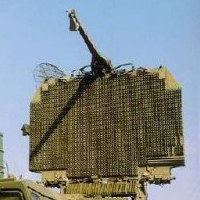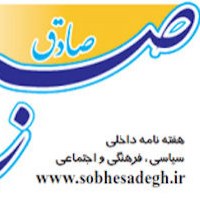![]()
Sun, Jan 16, 2011 | The Meir Amit Intelligence and Terrorism Information Center
Supreme Leader’s Website Presents: Thoughts and Lessons from 2009 Riots
Last week, Iran marked the anniversary of the violent clashes that had broken out in late December 2009 between security forces and the reformist opposition, after which the protest movement was effectively suppressed. On the occasion of the anniversary, the official website of Supreme Leader Ayatollah Khamenei (www.khamenei.ir) published a ten-day series of articles expressing the Supreme Leader’s opinions and thoughts on the political crisis that had broken out in Iran following the presidential election in the summer of 2009.
The Supreme Leader’s views were published in a series titled “Thoughts and Lessons”, which consist of ten chapters addressing the various aspects of the conflict between the regime and the opposition. The series offers an insight into Khamenei’s views on the riots and their implications.
The Supreme Leader sees a direct, immediate connection between the riots led by the reformist opposition leaders and the “soft war” waged for several years by Iran’s external enemies. The greatest sin of the “incitement” leaders, according to the Supreme Leader, was giving the enemies hope about the possibility of driving a wedge between the Iranian people and the regime leaders, and sowing dissent within the regime itself. The enemies of Iran, disheartened by the massive voter turnout for the presidential election, became hopeful once again that it was possible to lead a revolution to overthrow the regime. While Khamenei admits that the riots proved an “enormous challenge” for the regime, he claims that the Iranian people were fully successful in dealing with the challenge. Similarly to the strong stand the Iranian people took in the eight-year war against Iraq, they showed courage and resolve in dealing with the eight-month “soft war”.
The stand taken by the Iranian people against their domestic and external enemies this past year is especially significant, according to the Supreme Leader. Not only did the enemies of Iran realized that the Iranian people were strong, but the war made them even stronger, providing them with new strength and allowing them to embark on a new phase of development.
The enemies of Iran sought to undermine the people’s unity and create a rift between the masses and the regime leaders. Their true intent was to conquer Iran. The Supreme Leader warned that the fight against the enemies was still on, and that their continuing activities had to be monitored. The “front of arrogance” still operates against Iran: it imposes sanctions, spreads anti-Iranian incitement, and strengthens the domestic opposition. It makes use of political, cultural, and economic means. The U.S. even prevented a temporary shutdown of online social networks which it used to contact opposition activists. The UN Security Council resolutions against Iran, the Quran burning, the statements against Iran, the riots—all of that reflects the activity of Iran’s enemies, which stems from their concern about its growing strength and the possibility of it becoming the most influential country in the Middle East.
The Islamic republic is, however, stronger than ever as a result of last year’s events. Its path is clearer than ever before; the Iranian people have a better understanding of the direction they have to follow, and who their friends and enemies are. The enemies of Iran wanted to present a distorted, pessimistic view of the reality facing the Iranian people in order to make Iran weaker. Their efforts failed, and the people can now identify better than before the propaganda spread by the enemy online and on the media. The citizens of Iran realize that presenting a pessimistic future prior to the election was also part of the enemy’s propaganda. The enemies of Iran would have the people believe that Iran was in economic and political trouble. Now, the real picture emerges: Iran is strong and is an important player on the regional and international scene. Iran’s enemies know, understand, and feel it, but obviously conceal it.
The Supreme Leader cites the opposition leaders’ use of slogans based on the values of the revolution and the legacy of its leader, Ayatollah Khomeini, as an example of the Islamic republic’s strength. Khamenei argues that while in the past the regime’s opponents spoke out against the revolution leader and claimed that the revolution was dead, they no longer have the courage to do so, and they now use the slogans of Khomeini and the revolution to justify their position to the people. They understand the power of the slogans and their tremendous effect on the people. This indicates that Khomeini’s path and the path of the revolution are now the accepted views among the Iranian public.
The massive pro-regime rallies after the December 2009 Ashura riots also proves, according to Khamenei, that the leaders of “incitement” are a minority within the people.



 RSS
RSS











#Supreme Leader's Website Presents: Thoughts and Lessons from #2009 Riots | #Iran #Shiism http://j.mp/fsrEbD
RT @CrethiPlethi: #Supreme Leader's Website Presents: Thoughts and Lessons from #2009 Riots | #Iran #Shiism http://j.mp/fsrEbD